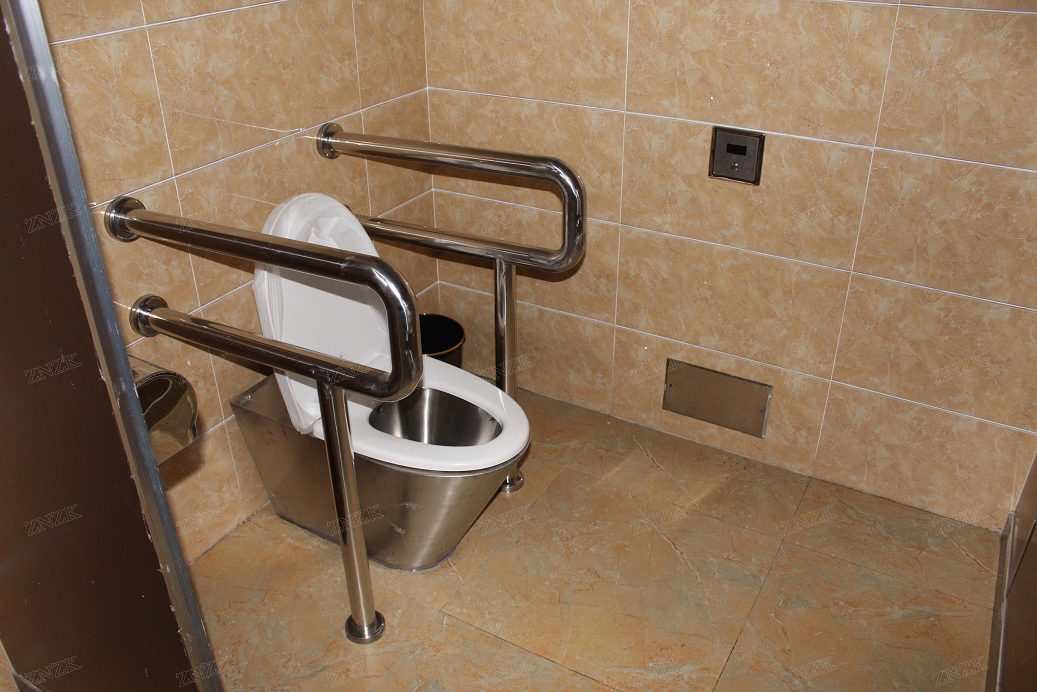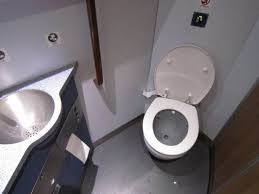Have you ever wondered why the toilets on an airplane or a high-speed train sound so different from the ones at home? The distinctive whoosh and powerful suction are not just for show—they are the sound of a vacuum toilet in action. This technology is a cornerstone of modern, sustainable transportation and is crucial for the unique environments of planes and trains. This article explores why these advanced sanitation systems are a necessity and highlights their broader benefits for a greener future.
How Does a Vacuum Toilet Work?
A vacuum toilet operates on a simple, yet highly efficient principle: it uses air pressure instead of water pressure to move waste. When you press the flush button, a valve opens, and a vacuum pump creates a powerful pressure differential inside the waste pipe. The low pressure instantly pulls the contents of the toilet bowl into a sealed tank.
This is a stark contrast to a traditional gravity-flush toilet, which relies on a large volume of water and the force of gravity to clear the bowl. While effective, this method is incredibly wasteful, using up to 6 liters of water per flush. A vacuum toilet, on the other hand, requires only a tiny amount of water (as little as 0.5 liters) to lubricate the bowl, making it a revolutionary water-saving toilet and a more eco-friendly alternative.
Why Airplanes Depend on Vacuum Toilets
The use of vacuum toilet technology on airplanes is a matter of pure engineering necessity, driven by strict requirements for weight, water, and pressure.
Weight and Water Savings
Weight is the single most critical factor in aviation. Every kilogram saved translates directly to less fuel consumption and lower operating costs. A traditional toilet system, with its large water tanks, would add hundreds of kilograms to a plane. By using a vacuum toilet, airlines save thousands of liters of water, significantly reducing the aircraft’s overall weight and environmental footprint.
Overcoming Air Pressure Challenges
At cruising altitude, the cabin is pressurized, but the air pressure is still significantly lower than at sea level. A gravity-fed system would struggle to work effectively in these conditions. The airplane toilet’s vacuum system is specifically designed to function flawlessly by creating its own powerful pressure differential, ensuring reliable flushing regardless of the external atmosphere.
Efficiency in Limited Space
Space on a plane is at a premium. The compact design of a vacuum toilet system, which uses smaller pipes and a centralized waste tank, allows for highly efficient use of the limited onboard space. This is essential for ensuring a clean, hygienic, and efficient wastewater management system in a confined environment.
Why High-Speed Trains Rely on Vacuum Toilets
While not subject to the same atmospheric pressures as aircraft, high-speed trains face their own unique set of challenges that make vacuum toilet systems the optimal choice.
Safety and Stability at High Speeds
For a train traveling at speeds over 300 km/h, the constant jostling and movement could make a traditional toilet system unreliable. The sealed, powerful suction of a high-speed train toilet ensures that waste is quickly and securely moved to the central holding tank, preventing spills and maintaining a stable environment for passengers and crew.
Water Conservation and Environmental Protection
High-speed trains often travel through regions with varying water resources. The exceptional water efficiency of the vacuum toilet system aligns perfectly with the global push for sustainability. By drastically reducing water usage, these systems contribute to a more sustainable transportation network and minimize the environmental impact of long-distance travel, earning them the title of eco-friendly toilet.
Enhanced Passenger Experience
The quick, powerful flush of a vacuum toilet minimizes odors and ensures a cleaner bowl with every use. This efficiency, combined with advanced odor control systems, significantly improves the overall sanitation and comfort for passengers on long journeys, making the high-speed train toilet a key component of modern travel comfort.
The Broader Advantages of Vacuum Toilets
The benefits of this technology extend far beyond planes and trains.
- Water Conservation: The most significant advantage is the drastic reduction in water consumption, a critical factor in a world with increasing water scarcity.
- Reduced Clogging: The powerful suction and smaller pipes make vacuum toilets highly resistant to clogging, which reduces maintenance costs and downtime.
- Versatile Application: Their ability to function independently of gravity and in extreme environments makes them ideal for ships, RVs, remote locations, and even urban public restrooms.
The Future of Sustainable Sanitation
The journey towards smarter, more sustainable sanitation is well underway. The next generation of vacuum toilet technology is becoming even more intelligent, with features like integrated sensors for monitoring usage and waste levels, predicting maintenance needs, and further optimizing water use.
As the industry leader in China, ZNZK has established itself as a frontrunner in this space. The company’s innovative solutions, known for their exceptional water and energy efficiency, and adaptability to extreme temperatures, have made them a go-to provider for diverse applications, from public infrastructure to high-speed rail. With its commitment to R&D and a proven track record of over 500 installations nationwide, ZNZK is not only a key player but also a driving force in shaping the future of global sanitation. By championing this technology, ZNZK and the broader industry are paving the way for a more sustainable and environmentally conscious world.
Post time: 26-09-2025





